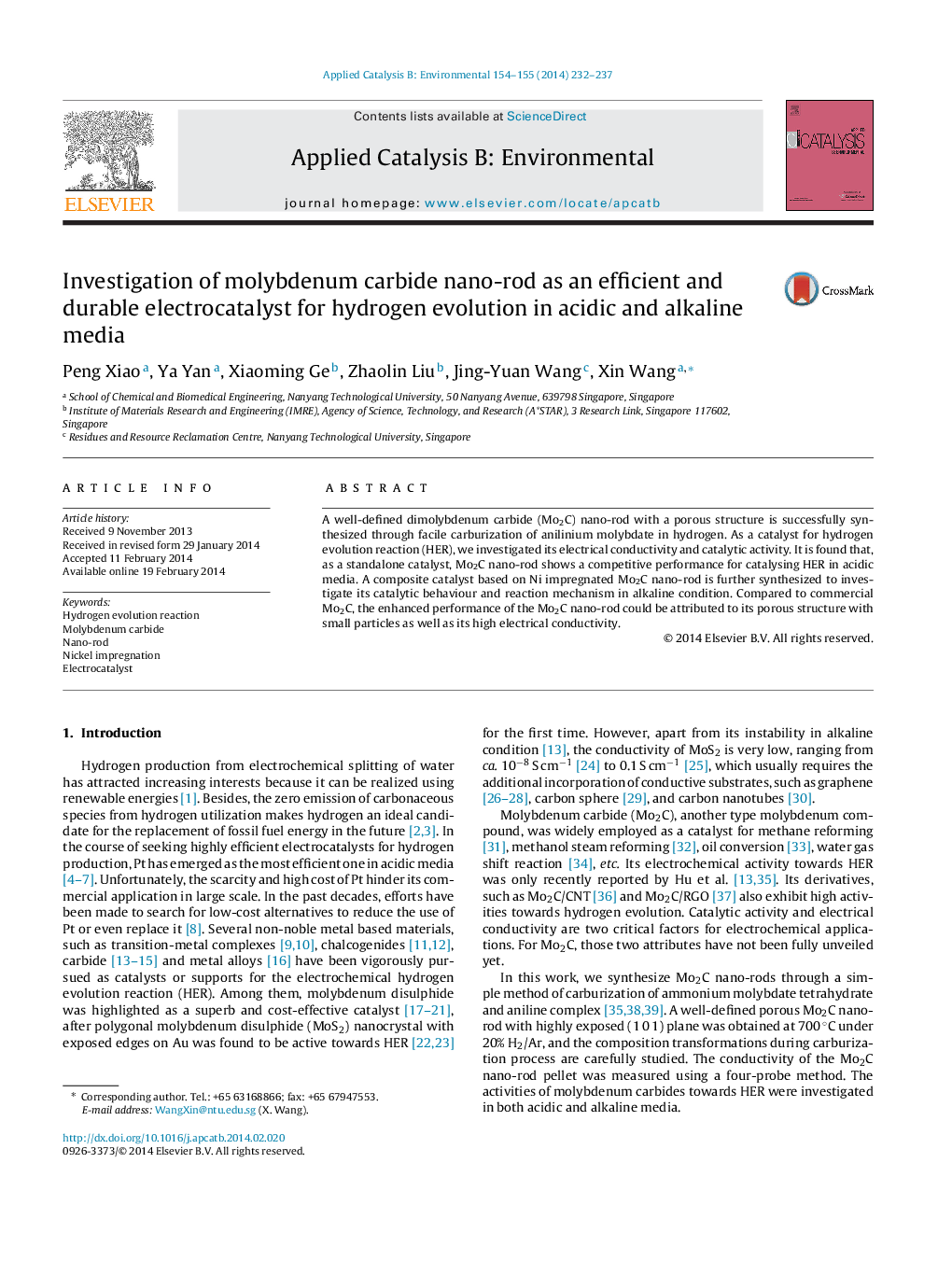| کد مقاله | کد نشریه | سال انتشار | مقاله انگلیسی | نسخه تمام متن |
|---|---|---|---|---|
| 45059 | 46395 | 2014 | 6 صفحه PDF | دانلود رایگان |
• Highly conductive molybdenum carbide nanorods are synthesized.
• It exhibits high activity as a standalone catalyst for hydrogen evolution reaction.
• The presence of metallic Mo is detrimental to the hydrogen evolution reaction.
• Ni impregnation onto molybdenum carbide improves the activity in alkaline media.
A well-defined dimolybdenum carbide (Mo2C) nano-rod with a porous structure is successfully synthesized through facile carburization of anilinium molybdate in hydrogen. As a catalyst for hydrogen evolution reaction (HER), we investigated its electrical conductivity and catalytic activity. It is found that, as a standalone catalyst, Mo2C nano-rod shows a competitive performance for catalysing HER in acidic media. A composite catalyst based on Ni impregnated Mo2C nano-rod is further synthesized to investigate its catalytic behaviour and reaction mechanism in alkaline condition. Compared to commercial Mo2C, the enhanced performance of the Mo2C nano-rod could be attributed to its porous structure with small particles as well as its high electrical conductivity.
Figure optionsDownload as PowerPoint slide
Journal: Applied Catalysis B: Environmental - Volumes 154–155, July–August 2014, Pages 232–237
